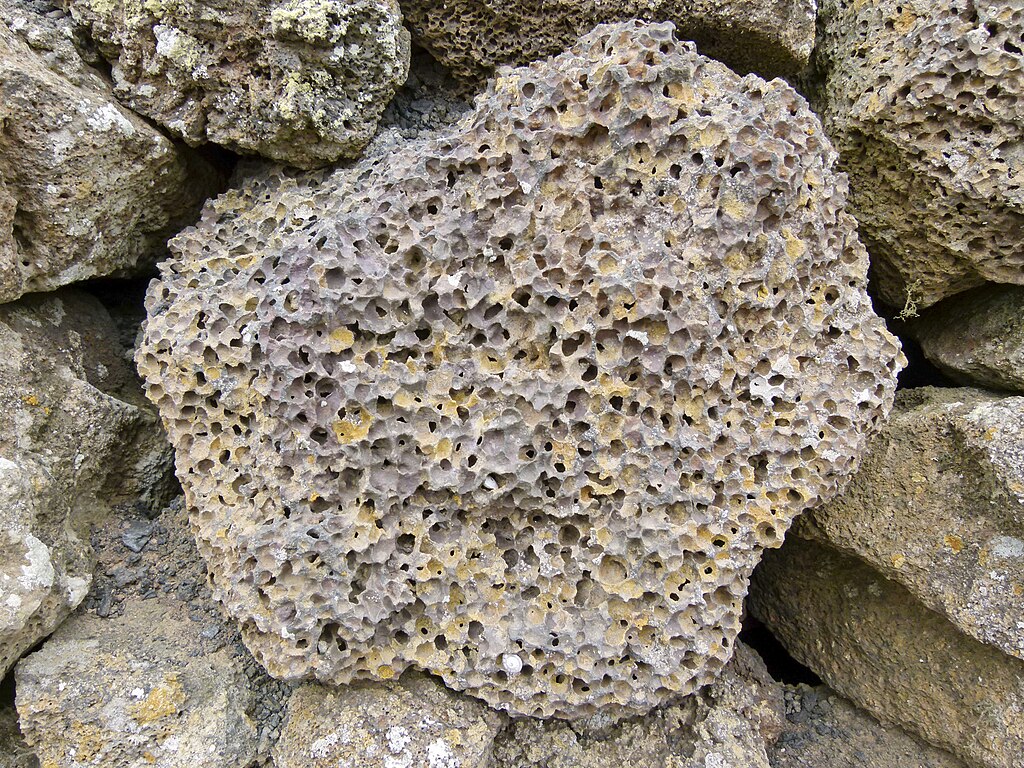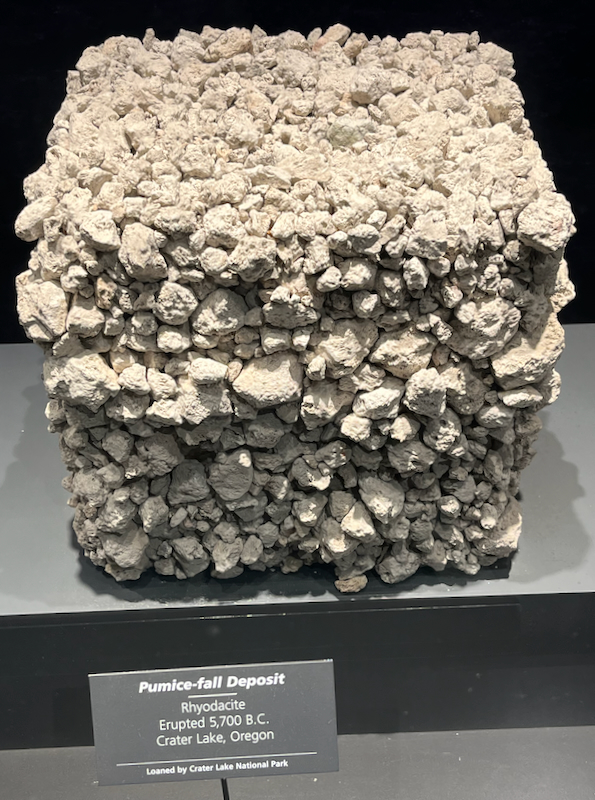Pumice
Pumice is the fizzy-, fluffy-looking relative of glassy obsidian, and like obsidian it’s also technically considered glass, even though it may look kind of rough. Pumice is a volcanic igneous rock that comes from lava that has air or other gas in it. When a volcano erupts explosively, instead of just slowly oozing out lava, if the lava cools very quickly after it comes shooting out, it can solidify with tiny gas bubbles trapped in it, forming pumice. Because of the bubbles, pumice is not very dense and has a low specific gravity. As a result, some pumice can actually float on water—now that’s a lightweight rock! You may have heard of pumice before because it can be used similar to a nail file, except people use it to “file” calluses or hard skin from their feet and other areas. Outside of the home, or underneath it, pumice is also used to produce concrete nowadays, as it was in ancient Rome. The name pumice comes from the Greek word for “froth,” and in ancient times it was called “sea froth” early on and “sponge stone” in later years. You can certainly find pumice in Greece or Italy, but it occurs all over the world because at one time or another there have been volcanoes on, or in between, every continent.
| Formula | Group or Type | Shape | Hardness | Specific Gravity | Streak | Luster |
|---|---|---|---|---|---|---|
| — | — | — | 6 | <1–2.35 | — | — |

